Shona Skinner interview: Embellishment of fabrics
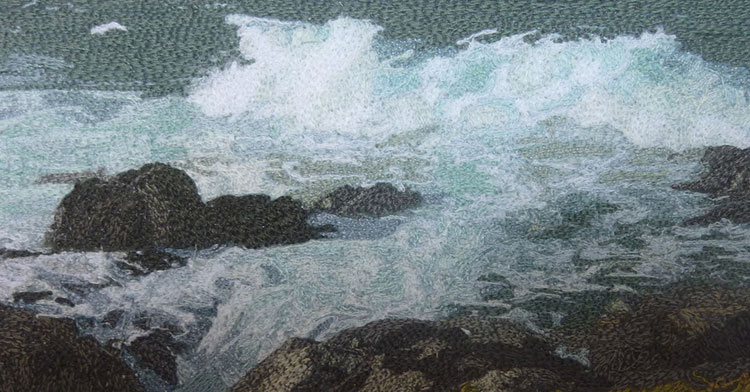
Inspired by the breathtaking landscapes of Shetland, Shona Skinner creates beautiful free-machine embroidery using a wide variety of textiles. She is perhaps best known for her experimentation with fabrics. Some of her methods including burning and deconstructing fabrics, as well as fusing different types of fabric together.
Shona admits that her passion is largely fueled by her desire to evolve, change, and try new things.
Although she has family roots in Shetland, it wasn’t until her permanent move thereto in July 2010 that textile artistry became a full-time passion for Shona. Her studio, located inside The Shetland Gallery – Britain’s most northerly gallery – overlooks Bluemull Sound between the islands of Unst and Yell.
Formally educated at Gray’s School of Art, most of Shona’s professional career was spent as an art teacher.
Her work has been exhibited in the RSW, Pall Mall Galleries and The Caledonian Club in London, as well as The Knitting and Stitching Show at Alexandra Palace.
The pleasure was all ours when we got to connect with Shona Skinner for an interview. From Head of Art, to full-time artist, to opening an art gallery, Shona boasts an impressive career in textile art.
The environment in which we live
TextileArtist.org: What initially captured your attention about textile art?
Shona Skinner: I have always been interested in textiles.
When I left school, I was torn between going to art school to study drawing and painting, or going to textile college in the Scottish borders to become a textile designer. I chose drawing and painting, which developed into a conventional art teaching career. However, in my last teaching position, as Head of Art in a leading girls’ school in London, I was introduced A Level Textiles.
So many of the girls wanted to go into the fashion industry. I suppose I came at the course from a very painterly background and that was when I realised what textile art could be all about. My interest in creating art was completely reinvigorated, so much so that we decided to move to Shetland so that I could become a full-time artist.
Who were your early influences?
My father was Head of Art at Dollar Academy and was an undoubted influence on my painting.
However, the greatest inspiration for and influence on my textile art has, without a shadow of a doubt, been the environment in which we live in Shetland. My grandmother was born in Shetland and I have been coming here for 50 years. We moved here in 2010. We live in my great grandparents’ croft house, which is about seven miles, as the crow flies, from the most northerly tip of the British Isles.
It is impossible to describe the rugged beauty of the place. Our bedroom looks out on Bluemull Sound, which is the stretch of water between the islands of Yell and Unst. I can literally spend hours of the day just watching the crashing seas, seeing the amazing colour changes in the cliffs, watching the gannets dive, the seals frolic, and the otters feeding on the beach below our house. The light is unique and I would challenge any artist not to be inspired on a daily basis. In particular, the textures in the landscape are astonishing and can only be brought out properly in textile pieces.
Embellishment of fabrics
What was your path to becoming an artist?
I studied drawing and painting at Gray’s School of Art in Aberdeen. I was privileged to study under the legendary Frances Walker and Sylvia Wishart. It was a wonderful training and gave me a lifelong commitment to the importance of drawing. Like many artists of my generation, I look at the output of many of the younger generation of art school graduates and think it is a great pity that they were never taught to draw.
I then went on to teacher training college and became a full-time art teacher, initially in Scotland and latterly in London.
Throughout my career, I continued to paint and have work in many private collections. However, I think it is fair to say that I found it difficult to maintain a real passion for creating art, whilst spending 10 hours a day teaching. It was only when we moved to Shetland, and I had the opportunity to become a full-time artist, that my creative energies came flooding back.
I cannot describe how exciting it is to have a proper, roomy, well-lit studio, which is completely my space. I can leave half-finished work if I want, and I can experiment with all sorts of textile effects to my heart’s content.
Stitching became so much easier
What made you choose your medium and techniques?
While I was teaching A Level Textiles, I was constantly experimenting with techniques to show the students. It was a fashion-based course so it was all about the embellishment of fabrics. I started to work with free-machine embroidery and was intrigued by the textures that could be created.
When we moved to Shetland, I was excited by the idea of taking this technique further. I purchased a Janome Decor Excel II 5024 sewing machine. It was the make that we used in school and as they were in constant use the machine repair man would have to visit school regularly! I watched as he repaired the machines and became aware of the basic problems. With no machine repair facilities available in Shetland it seemed to make sense to stick with the machine I was familiar with.
The first main piece I started to work on was the head of a ram. I stitched directly onto calico, not using an embroiderers hoop as I found this restrictive. As I stitched, the fabric started to wrinkle but I kept going and once the piece was completed I stretched it over plastic board and saved the ram. Although I was pleased with the result, I decided to experiment further to see how I could make the fabric more stable. Using organdie fabric and bondaweb I fused the fabric on to the calico. This worked a treat and stitching became so much easier.
I work without a foot on the machine as I find that gives me more freedom to see what I am doing. I have experimented with different types of threads but find polyester to be the most reliable in terms of threads breaking. This worked in my favour when a couple were looking to purchase one of my pieces and explained that if I had worked with silk threads, they could not have purchased the work – they were vegans!
Do you use a sketchbook?
I have several sketchbooks on the go. I have recently been running workshops for the Shetland Embroiderers entitled ‘Sketching to Stitching’. This was to encourage the group to work from their own drawings and then to develop them into free-machine embroidered pieces. Some of the ladies had not sketched since they were at school and they all seemed delighted with their results. I think I have converted many of them to keeping a sketchbook on the go!
I have one particular sketchbook which I would be be very sorry to lose. When I was teaching the A Level Textile course I put all my samples into this little book and it has become my bible of techniques that I am constantly referring back to. I also make fabric books full of experimental pieces using ripped fabrics, which are reconstructed and then stitched, burned, beaded, etc.
There are no rules
What advice would you give an aspiring textile artist?
There are no rules!
Fabric is the most wonderful medium, so play, experiment and have fun. Never throw anything out, even experiments that have gone wrong as they are good reminders and can often be upcycled into another piece. I find it useful to have clear plastic boxes to store fabrics. I colour coordinate them so that it is easy to put colour schemes together.
Collect unusual wools, threads, beads, fabrics, and so forth, so that you have a wealth of stock to work with.
Do you run workshops?
I run workshops for various groups in Shetland. I also do one-on-one courses for people in my studio. These normally consist of a day out sketching in the stunning surroundings of the island of Yell and a day in the studio working with fabrics inspired by the previous days work. Each workshop is tailor-made to meet the needs of the individual.
Britain’s most northerly gallery
Where can readers see your work?
Three years ago, over supper with a couple of glasses of wine, my husband I decided that it would be a great idea to open an art gallery! There is only one other independent gallery in Shetland and a wealth of talented artists, so we saw a gap in the market.
The perfect building existed three miles down the road from our house and so The Shetland Gallery, Britain’s most northerly gallery, came about. We showcase the best of Shetland’s art and crafts and this is where I have my studio. My work is always on show here and visitors are welcome to come into my studio and find out more about the processes I use.
Living in a remote place, the gallery is seasonal. We open from Easter weekend until the end of September, but we are always happy to open at other times by appointment.
In 2013, we had an exhibition at The Caledonian Club in London. Just in October this year, my work was on show at The Knitting and Stitching Show, Alexandra Palace, London. I hope to be back next year!
To find out more about Shona Skinner, please visit www.shonaskinner.com and shetlandgallery.com.
If you’ve enjoyed our interview with Shona Skinner, please leave a comment below!


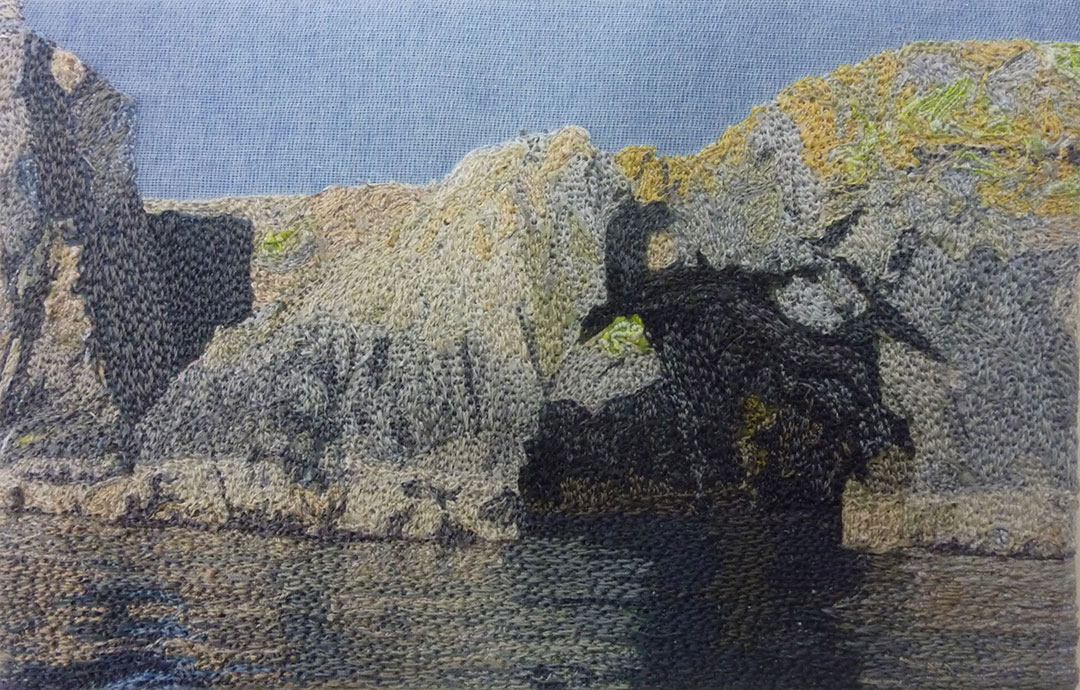
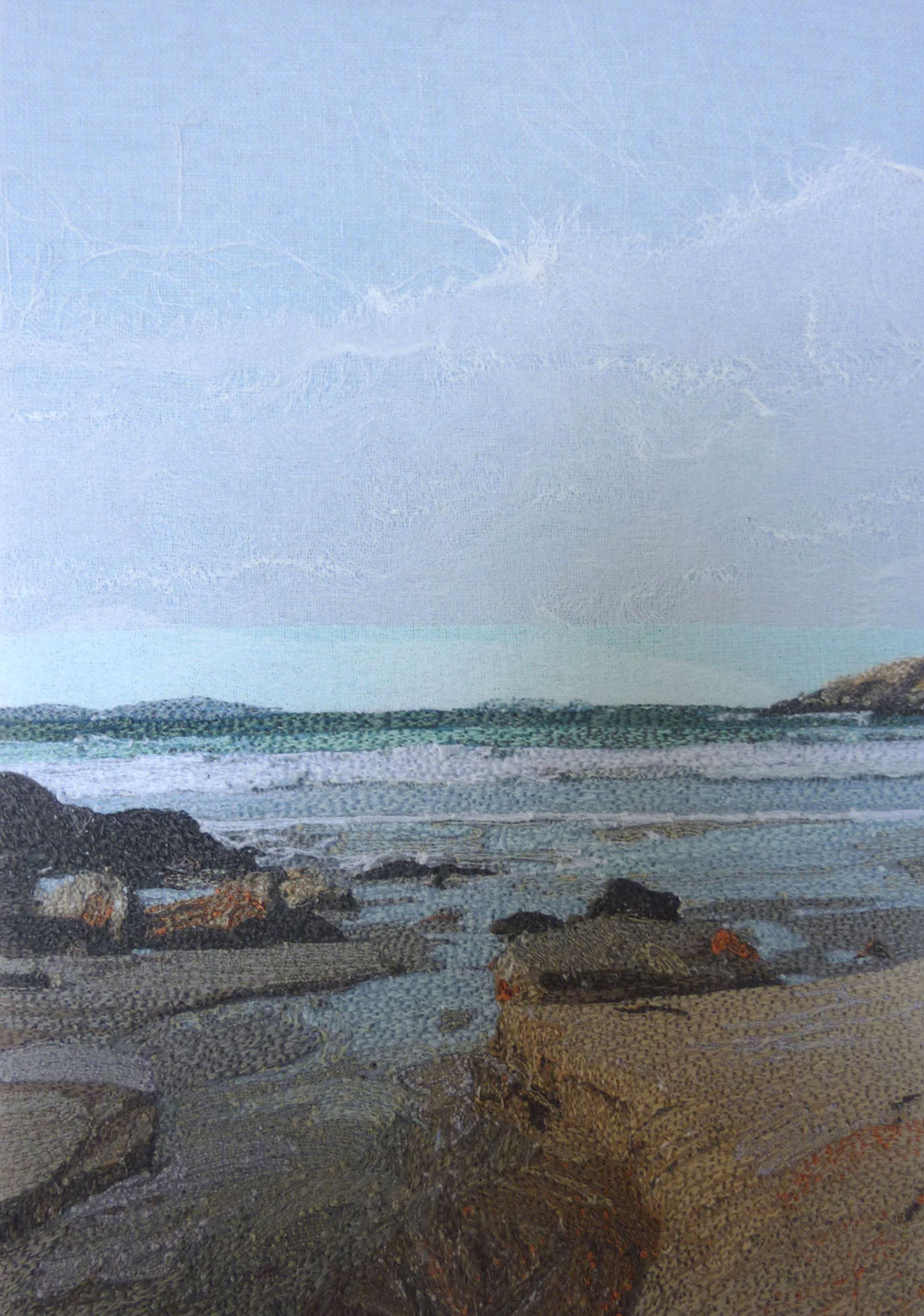
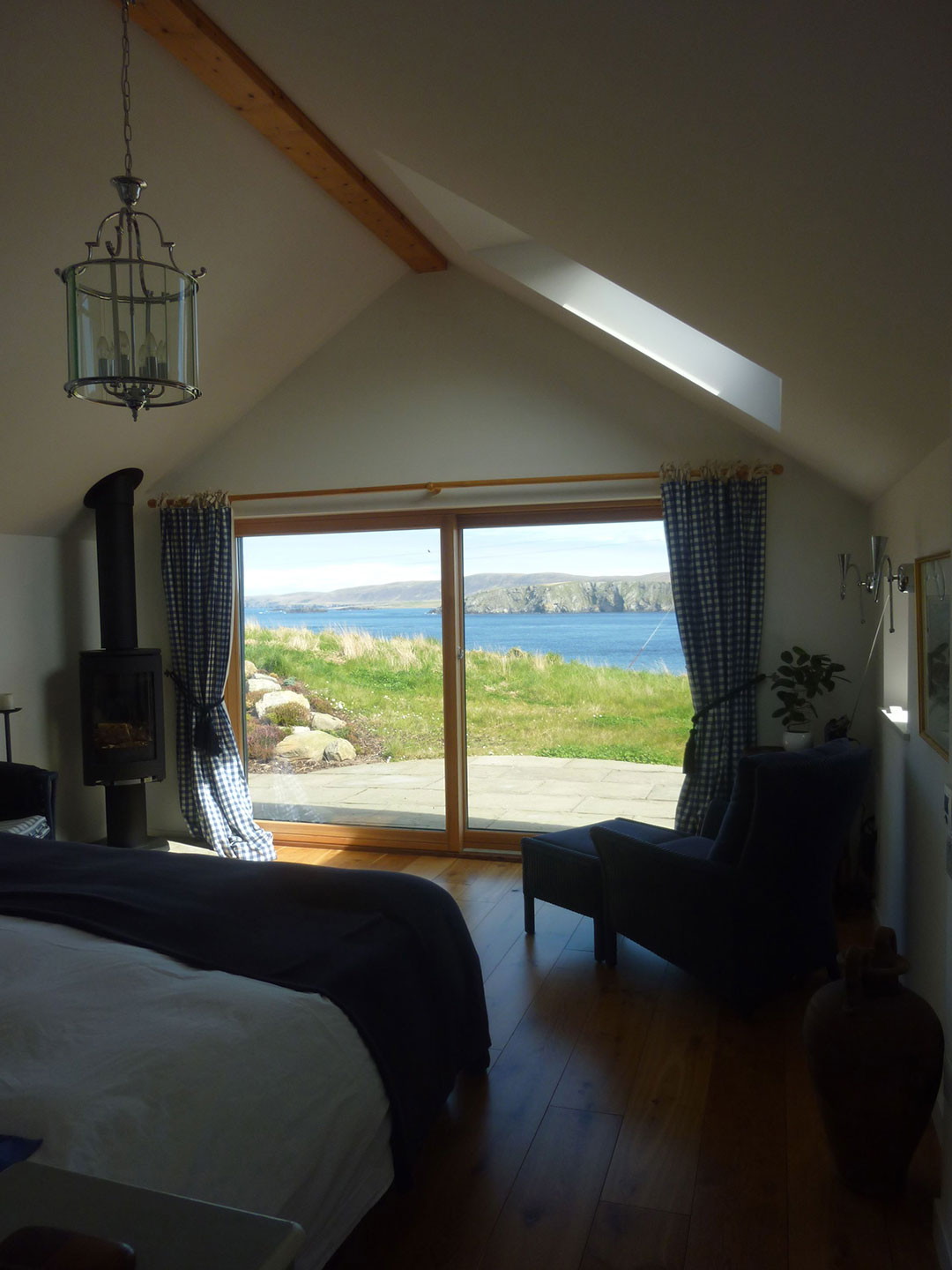
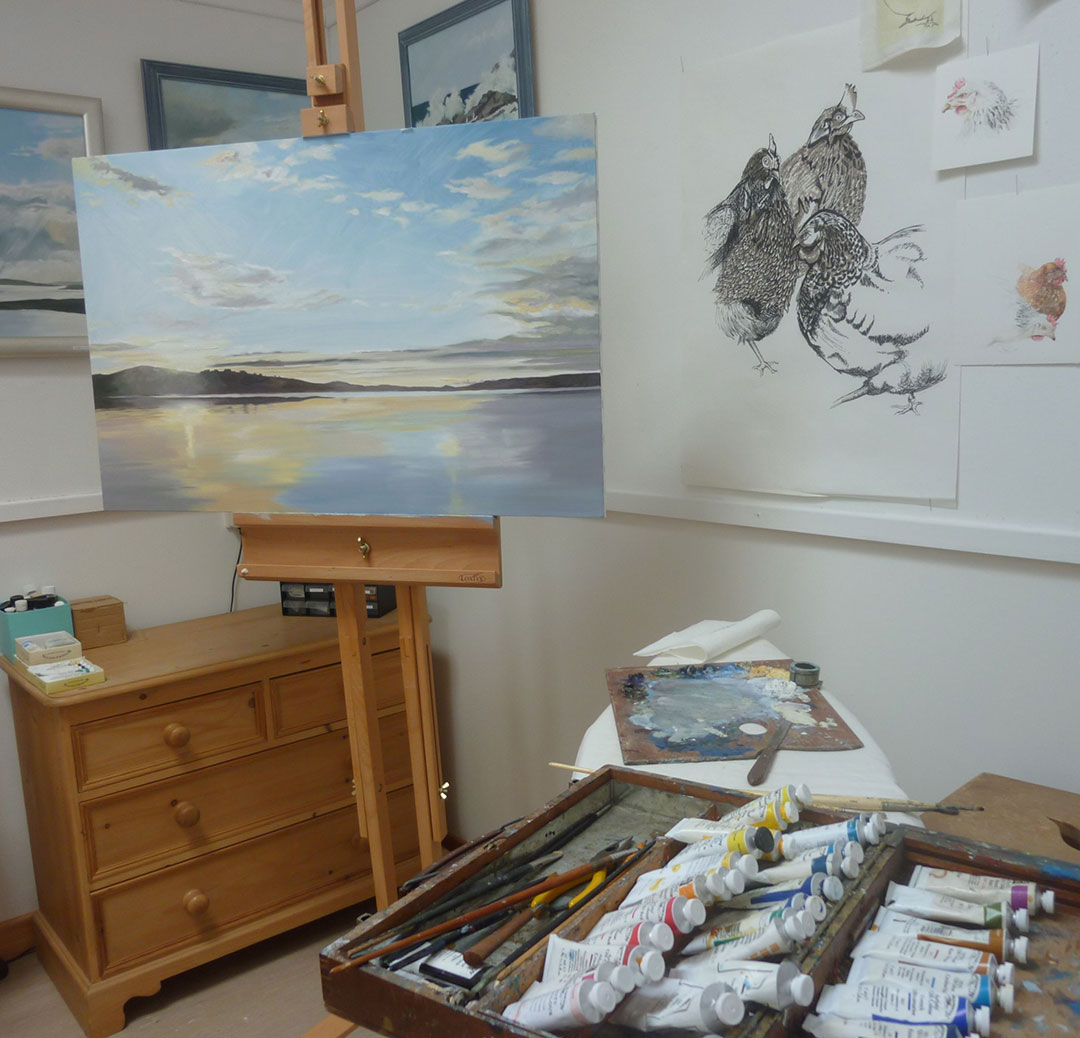
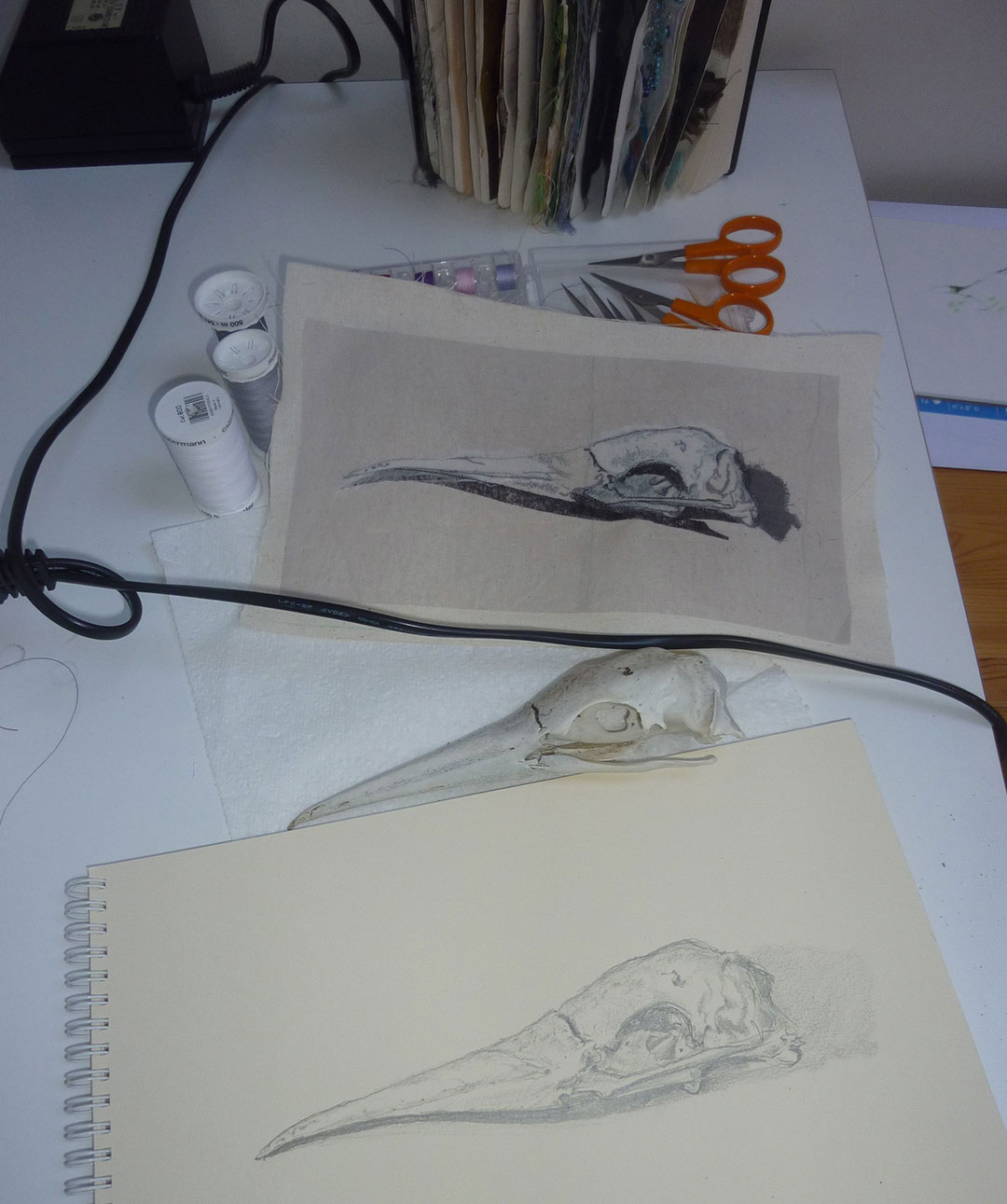
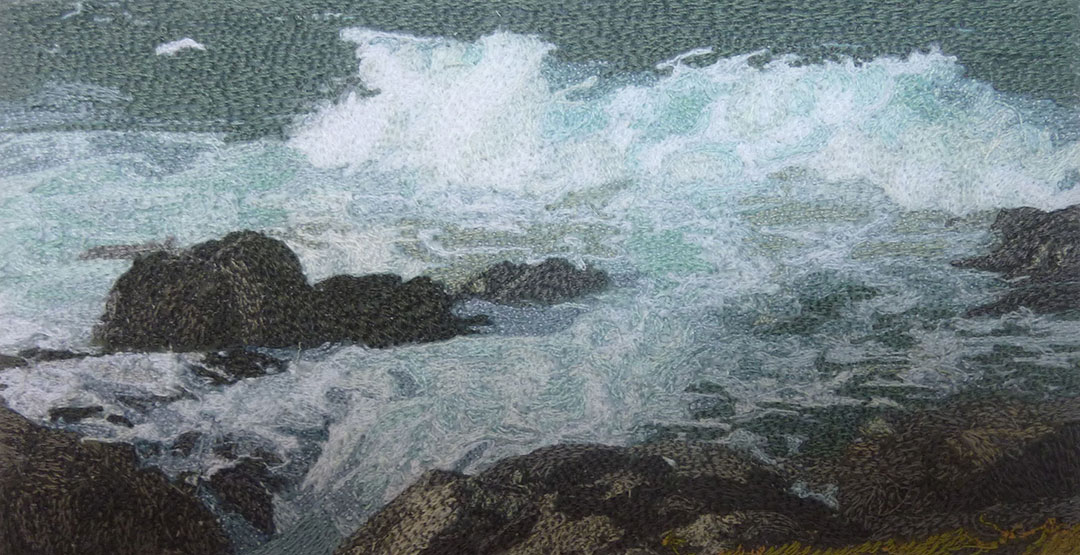
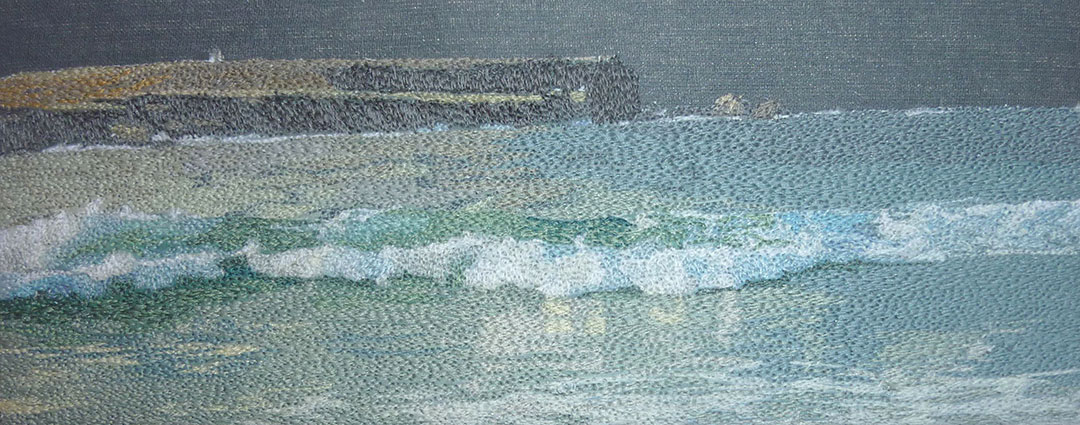
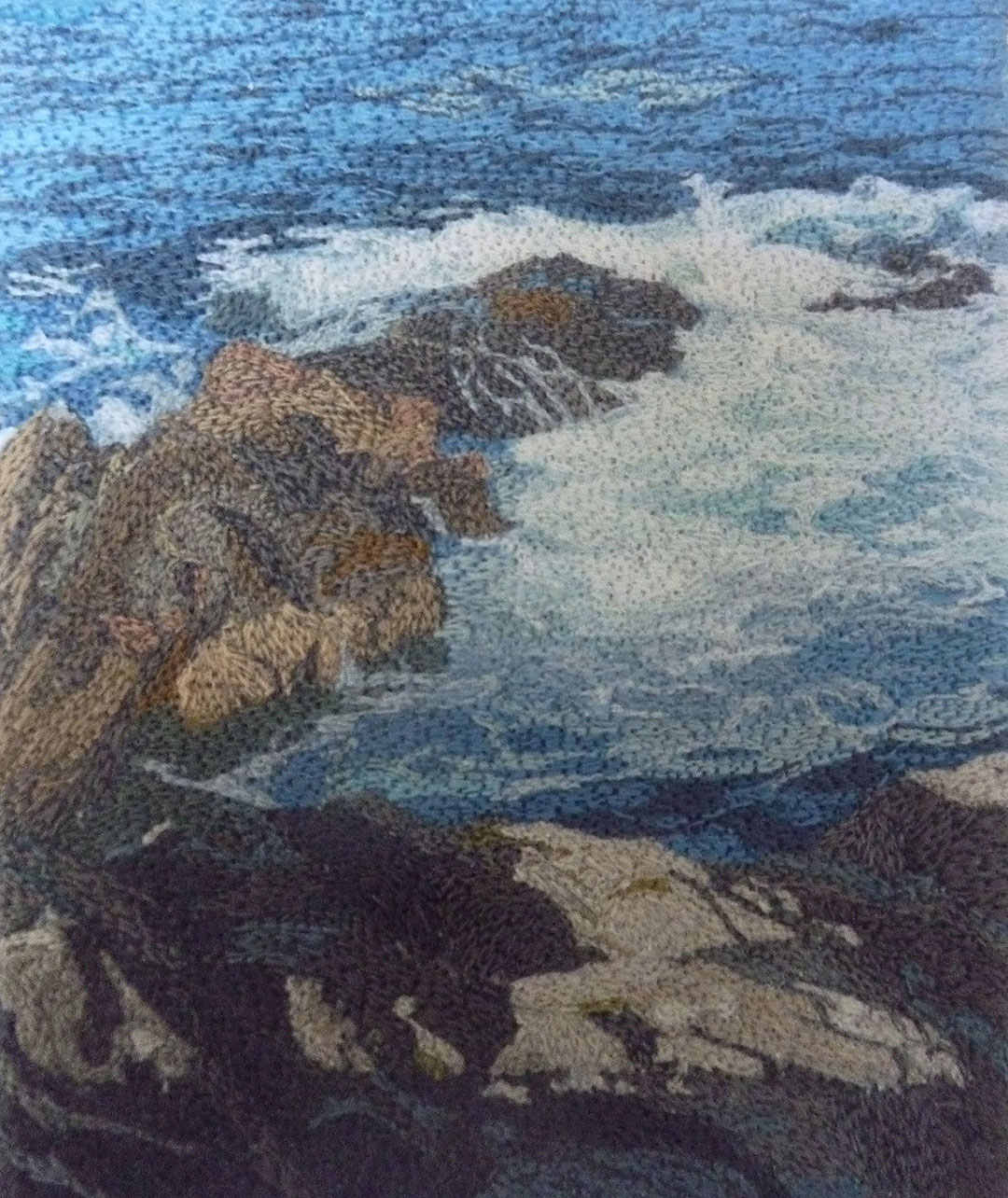
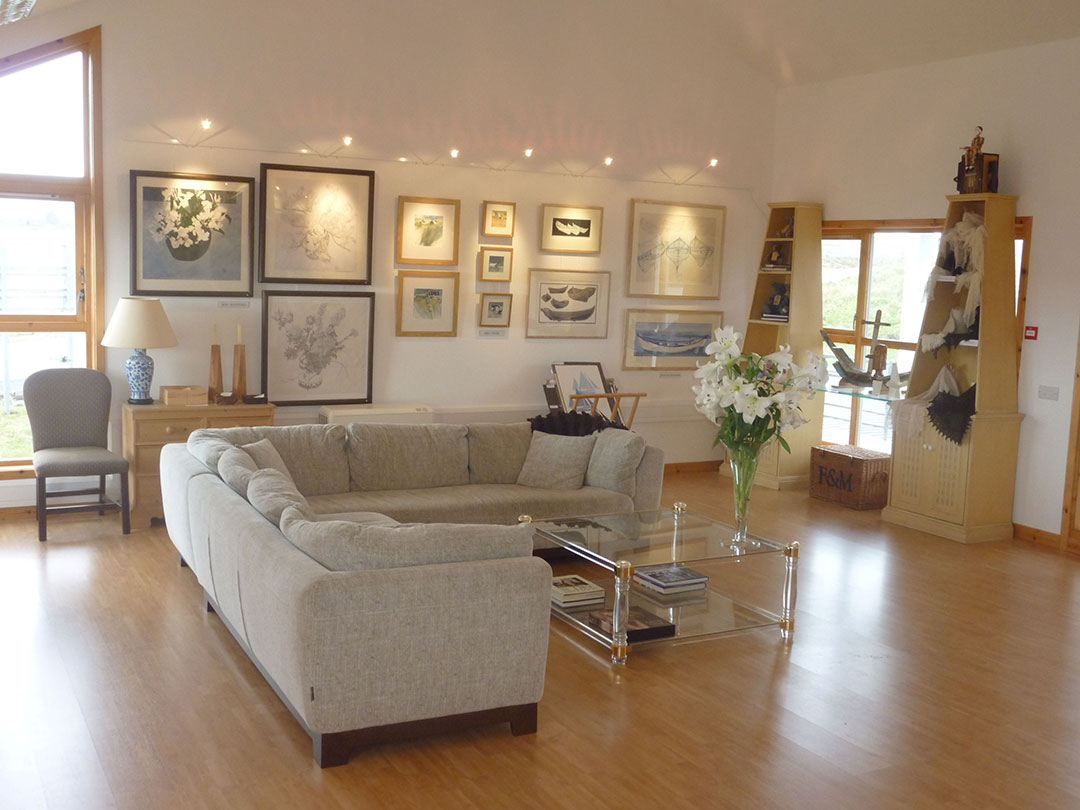















Shona- your work is beautiful. You use an apparently delicate blend of fabric and stitching to depict the raw energy of the Shetland land and seascapes, to stunning effect. Lynn x
Absolutely fabulous Shona! I’m a very proud California cousin.
How fantastic to see your work, Shona. Congratulations on your Shetland “eye”!
Andy
Your work is so beautiful. I love machine and hand embroidery. I don’t have my own space to work in at present and feel a tinge of envy seeing your studio.
What exquisite work. I am visiting Glasgow this summer, and now wish I were going to the Shetlands! Your studio looks so inviting. I will make it to the Festival of Quilts, however, and hope to be inspired by what I see there.
Very very beautiful, would that I could! To create such a magical response to landscape, so truly grateful that such an artist would take the time to share. Thanks to Shona.